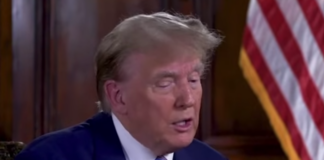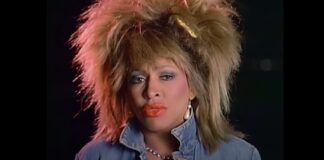OPINION | This article contains opinion. This site is licensed to publish this content.

U.S. Olympic Raven Saunders is using the medal podium to protest for “racial and social justice.”
This breaks the rules because the Olympic committee forbids protests during medal ceremonies.
Now she’s under investigation by the U.S. Olympic and Paralympic Committee and International Olympic Committee.
Saunders, who throws the shot put, stood on the medal podium after placing second. She proceeded to cross her arms over her head. Here’s the image:
Let them try and take this medal. I’m running across the border even though I can’t swim 😂 https://t.co/B59N2v9KAk
— Raven HULK Saunders (@GiveMe1Shot) August 1, 2021
“As with all delegations, Team USA is governed by the Olympic Charter and rules set forth by the IOC for Tokyo 2020,” the committee said.
“Per the USOPC’s delegation terms, the USOPC conducted its own review and determined that Raven Saunders’ peaceful expression in support of racial and social justice that happened at the conclusion of the ceremony was respectful of her competitors and did not violate our rules related to demonstration,” it said.
The USOPC argues that, although the IOC rules forbid protests during medal ceremonies, Saunders’ actions came during a photo op period and not the ceremony itself. Therefore, no rules were broken.
This would appear to be a slippery slope, thereby opening the door for more protests occurring immediately before or after the medal ceremony and still on the podium.
IOC chief spokesman Mark Adams responded that the international body was still “looking into” the U.S. statement.
“We are also in contact with World Athletics,” he said.
“We are not surprisingly looking into the matter, and will consider our next steps. We need to fully establish what’s going on and then take a decision from there,” according to USA Today.
Saunders, who is an openly queer woman, claims she needed to speak for “people all around the world who are fighting and don’t have the platform to speak up for themselves.”
“I really think that my generation really don’t care,” she said.
“At the end of the day, we really don’t care. Shout out to all my black people. Shout out to all my LGBTQ community. Shout out to all my people dealing with mental health. At the end of the day, we understand it’s bigger than us and it’s bigger than the powers that be. We understand that there’s so many people that are looking up to us, that are looking to see if we say something or if we speak up for them,” Saunders said.
THIS IS WHAT WOULD STOP THIS CRAP START TAKING MEDALS AND FINE THE ONES WHO LOST AND PROTEST! No Respect: US Athlete Raven Saunders Risks Losing Medal After Flaunting Olympic Rules with Her Political Protest at Medal Ceremony https://t.co/kwd4FfFRnW via @gatewaypundit
— Greg Hull (@spfxdog) August 2, 2021
TRENDING 👇 Transgender Weightlifter Loses at Olympics

New Zealand weightlifter Laurel Hubbard competed as the first transgender athlete in the Olympics.
Hubbard, who transitioned at age 35, competes against women in weightlifting. Hubbard, who is now 43, entered Olympic competition after eight years following the transition. Hubbard went through male puberty then qualified to joined New Zealand’s team in weightlifting and compete for gold.
The International Olympic Committee (IOC) made its decision to allow transgender athletes to compete. “We have to pay tribute to her courage,” the IOC said. However, Hubbard quickly learned her fate at the Olympics. She failed in the women’s +87kg weightlifting.

Hubbard had three attempts. In the first attempt, the weightlifter tried to lift 120kg and failed. In the second attempt, Hubbard lifted a “very shaky” 125kg. One of the female commentators reportedly said it’s “very surprising that the questionable 125kg lift wasn’t challenged with an appeal.”
Hubbard failed to lift the 125kg on the third attempt which removed the weightlifter from the competition.
The IOC’s medical and science director — Dr. Richard Budgett — acknowledged that Hubbard competing in weightlifting was “large, difficult and complex,” Fox News reported. While transgender athletes are required to demonstrate that their testosterone level is below a specific measurement for at least 12 months prior to their first competition, serious questions remain whether decades of higher testosterone levels have already produced significant muscle growth and maturity, which give Hubbard an unfair advantage against her fellow female competitors.





